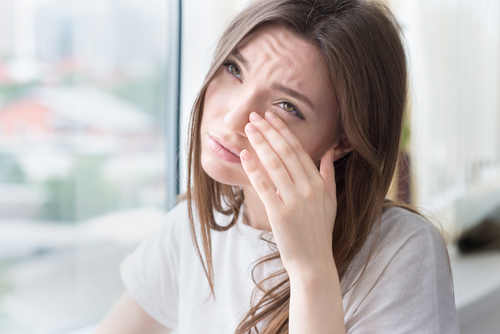
Do you suffer from dry and irritated eyes? You may have an eye condition called dry eye syndrome.
Dry eye syndrome occurs if you don’t produce enough tears or the tears produced are low quality. Tears are necessary to lubricate your eyes.
When your eyes do not have enough lubrication, they will become dry and irritated. If you suffer from dry eye syndrome, there are several treatment options available.
If trying natural dry eye treatment options don’t help, you should schedule an eye exam with your eye doctor. Proper diagnosis is necessary to treat dry eye syndrome.
Treating this condition can reduce the pain and discomfort caused by dry eye syndrome. Keep reading to learn why you should consider dry eye treatment!
Dry Eye Syndrome Diagnosis
During your eye exam, your eye doctor will perform a series of tests and procedures. These are used to both diagnose dry eye syndrome, as well as identify the root cause of what’s making your eyes dry.
Here are a few ways your eye doctor at Coastal Vision will determine diagnosis and treatment.
Research Discussion
Your eye doctor will start by asking you a series of questions. This helps to determine your medical history, and how healthy your eyes are.
Your personal medical history is necessary to diagnose your eye condition. This is crucial when it comes to determining the best treatment options for your eyes.
Measure Tear Volume
Your eye doctor will measure how many tears your tear ducts produce. This can help to diagnose dry eye syndrome since it is most commonly caused by a lack of tear production.
Measure Tear Quality
Your eye doctor will test the quality of your tears to determine if they provide your eyes with enough lubrication. To do this, your eye doctor will examine the surface of your eyes including your cornea.
They will look for and examine staining patterns on your corneas. This is a good measure of the quality of tears by determining the speed at which they evaporate.
Tears that evaporate too quickly cannot lubricate your eyes. Tear production that is normal but not lubricating is a sign of meibomian gland dysfunction (MGD).
Eyelid Examination
Your eye doctor will also examine your eyelids to determine if they are healthy. If you have inflamed eyelids, you may suffer from blepharitis.
This is an eye disease that is closely related to dry eye syndrome. It stems from blocked oil glands in your eyelids.
Dry Eye Treatment
Once your eye doctor has diagnosed your condition, they will prescribe treatment. Here are some common treatments if you have dry eye syndrome.
Prescription Eye Drops
Both dry eye syndrome and MGD cause the surface of your eye to become inflamed. This happens because the surface becomes too dry.
Prescription eye drops reduce inflammation on your cornea. This alleviates pain and discomfort.
Punctal Plugs
Your tears drain from your eyes through tiny openings called puncta. By inserting a plug in your puncta, your tears are stopped from draining. This provides for increased lubrication for your eyes.
Serum Tears
Serum is a clear fluid that’s found in your blood. It has lubricating capabilities beyond commercial artificial tears.
The serum from your blood can be used to make artificial tears that can treat your dry eye syndrome.
Meibomian Gland Stimulation
The meibomian glands exist on the edges of the eyelids and are responsible for producing a type of oil called meibum. Meibum, water and mucus are the three components that make up tear film, which keep the eye moist. Meibum is an essential part of tear film as it prevents the watery surface of eye from drying out too quickly.
Meibomian Gland Dysfunction (MGD) is a common eye condition that occurs when there is a blockage in the meibomian glands or the quality of meibum secreted is poor. This leads to an inability of the glands to secrete enough oil into the tears. The tear film surface then evaporates too quickly. MGD is associated with dry eye syndrome as well as an inflammation of the eyelids, called blepharitis, which causes red, swollen eyelids and crusty eyelashes.
There are treatment options to stimulate the meibomian glands to improve tear film quality through localized heat and pressure. Coastal Vision Medical offers a treatment option called iLux®, which applies therapeutic, light-based heat to warm the meibomian glands and soften them to release oil. Using compression, the oil is then expressed from the glands. Your medical professional will customize heat and pressure applications depending on your needs and will assess your eyelids to determine the treatment zones. Treatment lasts about 8-12 minutes for both eyes.
The iLux® MGD device delivers treatment directly to the blocked meibomian glands, which makes it easier for the oil to be released naturally after treatment. iLux® treatment has been shown to reduce dry eye symptoms including irritation and feelings of grittiness. A clinical study found that patients’ meibomian glands improved by three times at two weeks after treatment and by four times at four weeks after treatment (Hardten DR, Schanzlin JD, Dishler JG, et al, 2018).
Get Dry Eye Relief Now
Looking for relief from your dry eyes? The first step is an eye exam.
Schedule yours today with Coastal Vision Medical at one of our convenient locations in Irvine, Long Beach, Norco, or Orange, CA today!







